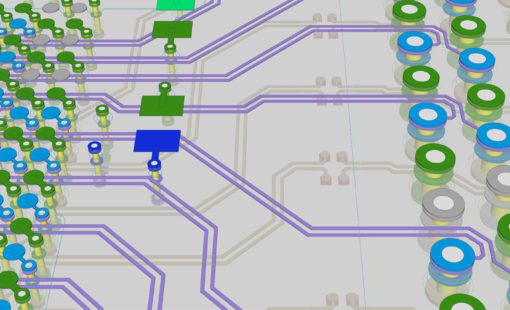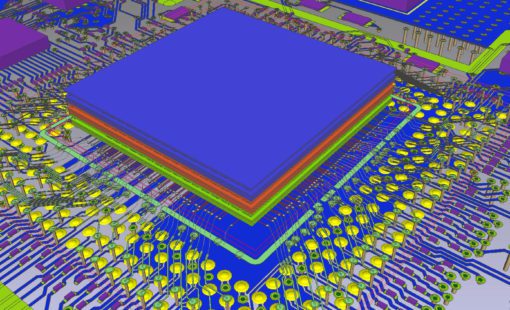Since the first implementation of electronic simulation in the schematic capture software realm, circuit designers have been using SPICE for analog and digital “what-if analysis”. Engineering students adopted it for their studies and then continued using it throughout their careers. PCB designers typically have little or no experience with SPICE applications. No worries, follow along with me and get to know your SPICEs!
The history of SPICE
SPICE (Simulation Program with Integrated Circuit Emphasis) is a general-purpose, open-source analog electronic circuit simulator. It is a program used for integrated circuit and board-level design to check the integrity of circuit designs and to predict circuit behavior.
Circuit simulation programs – of which SPICE and derivatives are the most prominent – take a text netlist describing the circuit elements (transistors, resistors, capacitors, etc.) and their connections, and translate this description into equations for solving. The resulting general equations are nonlinear, differential-algebraic equations that are solved using implicit integration methods, Newton’s method, and sparse matrix techniques.
SPICE was developed at the Electronics Research Laboratory of the University of California, Berkeley by Laurence Nagel with direction from his research advisor, Prof. Donald Pederson.
- SPICE1 was first presented at a conference in 1973 and used in nodal analysis to construct the circuit equations.
- SPICE2 was a much-improved program with more circuit elements, variable timestep transient analysis using either the trapezoidal (second-order Adams-Moulton method) or the Gear integration method (also known as BDF), equation formulation via modified nodal analysis (avoiding the limitations of nodal analysis). The last version of SPICE2 was 2G.6 in 1983.
- SPICE3 was developed by Thomas Quarles (with A. Richard Newton as advisor) in 1989.
The first commercial version of SPICE was ISPICE, an interactive version on a timeshare service, National CSS. The most prominent commercial versions of SPICE include HSPICE (now owned by Synopsys, Inc.) and PSPICE (now owned by Cadence Design Systems). The academic spinoffs of SPICE include XSPICE, developed at Georgia Tech, which added mixed analog/digital “code models” for behavioral simulation, and CIDER (previously CODECS, from UC Berkeley/Oregon State Univ.), which added semiconductor device simulation. SPICE, XSPICE, and CIDER have been integrated into open source NGSPICE. The integrated circuit industry adopted SPICE quickly, and until commercial versions became well-developed, many IC design houses had proprietary versions of SPICE.
Where is SPICE today?
Today a few IC manufacturers continue to develop SPICE-based circuit simulation programs. Among these are ADICE at Analog Devices, LTspice at Linear Technology (available to the public as freeware), Mica at Freescale Semiconductor, and TINA at Texas Instruments.
Similarly, Linear Technology (Analog Devices), Texas Instruments makes available a freeware Windows version of the TINA software (called TINA-TI), which also includes their version of SPICE and comes preloaded with models for the company’s integrated circuits. Analog Devices offers a similar free tool called ADIsimPE (based on the SIMetrix/SIMPLIS implementation of SPICE).
Other companies maintain internal circuit simulators which are not directly based upon SPICE. Among them PowerSpice at IBM, TITAN at Infineon Technologies, Lynx at Intel Corporation, and Pstar at NXP Semiconductor.
What is the difference from HSPICE, PSPICE, LTspice, TINA-TI and ADIsimPE? They are all based on SPICE3 shared with common syntaxes and elements. The differences are new add-on features, devices, elements, and analysis modes. For example, IBIS models, w-elements, s-parameters, and Monto Carlo analysis, etc. HSpice is the most advanced SPICE simulator on the market at this time. Most EDA tool vendors support SPICE2/3 syntaxes and the popular EDA simulators often take HSpice syntax netlist directly for simulations.
SPICE-based Simulation
What about Zuken’s SI/PI simulator? Zuken’s simulator is also based on SPICE3 and includes advanced enhancements, such as IBIS models, w-elements, AC/DC/Transient Analysis, etc., with an integrated Chip, Package and Board Co-Design environment.
Hopefully, this dispels the notion that PSPICE is paprika and gives you a bit more knowledge about SPICE-based simulation and SPICE in general.
Learn more about our PCB Design Software with powerful simulation capabilities.
References:
- Nagel, Laurence W., SPICE2: A Computer Program to Simulate Semiconductor Circuits, Memorandum No. ERL-M520, University of California, Berkeley, May 1975
- “Life of SPICE”, February 4, 2012, at the Wayback Machine https://web.archive.org/web/20120204190147/http://www.designers-guide.org/Perspective/life-of-spice.pdf
- “List of IEEE Milestones”. IEEE Global History Network. IEEE. Retrieved 4 August 2011. https://ethw.org/Milestones:List_of_IEEE_Milestones
- “SPICE” wikipedia.org https://en.wikipedia.org/wiki/SPICE





